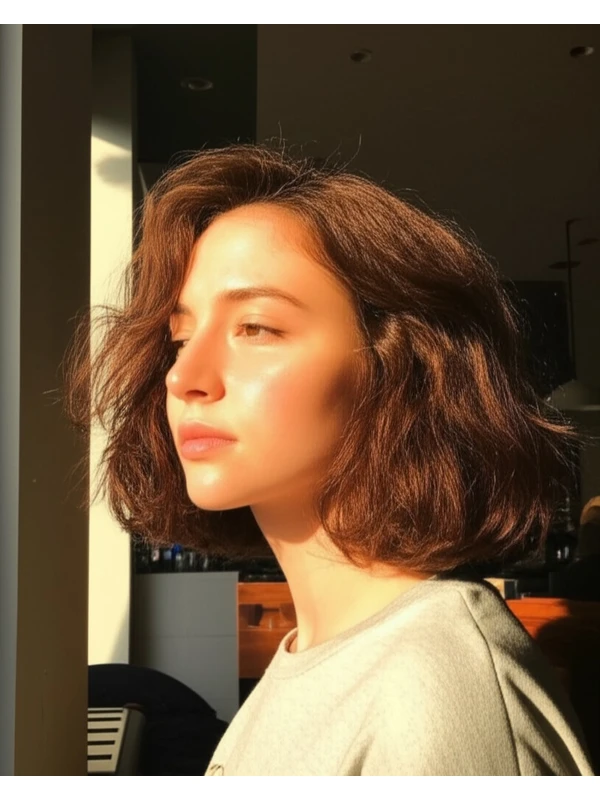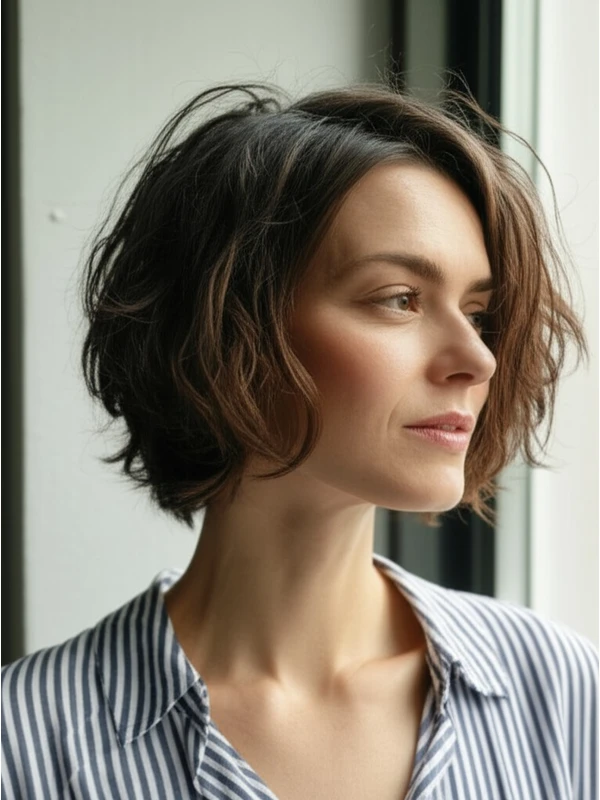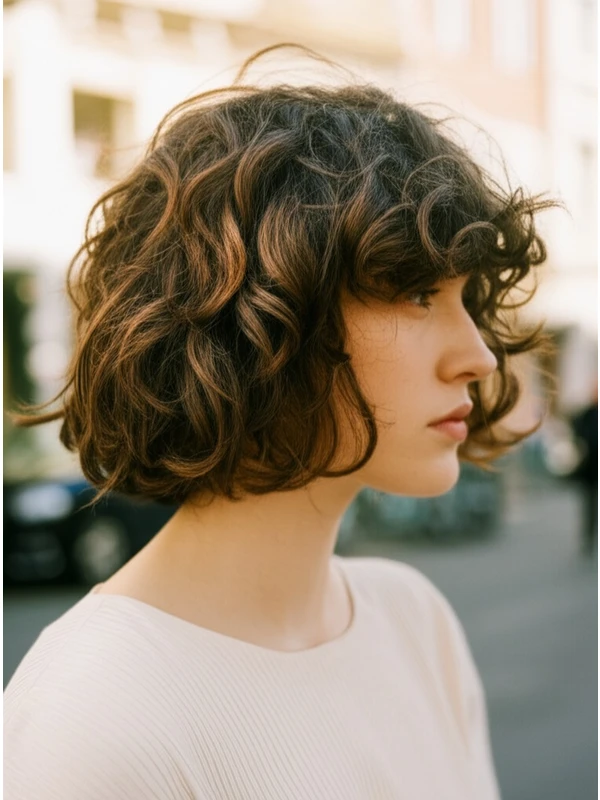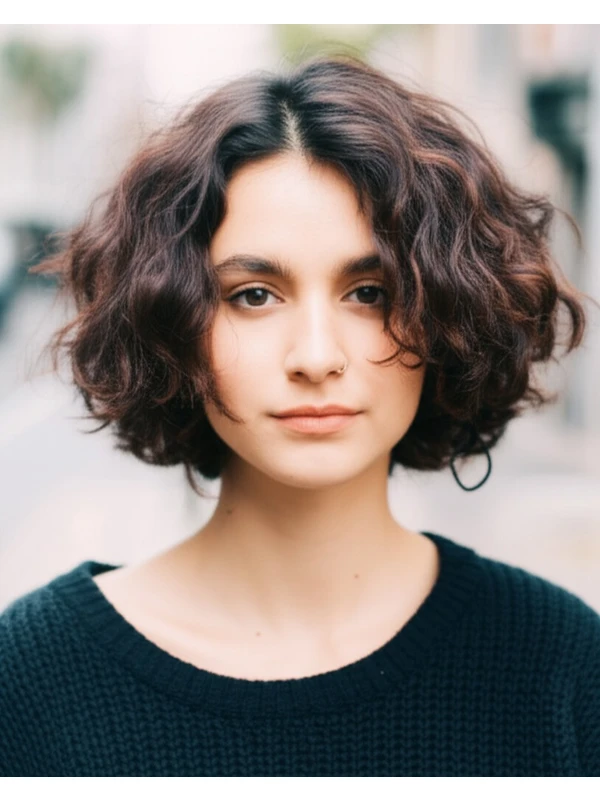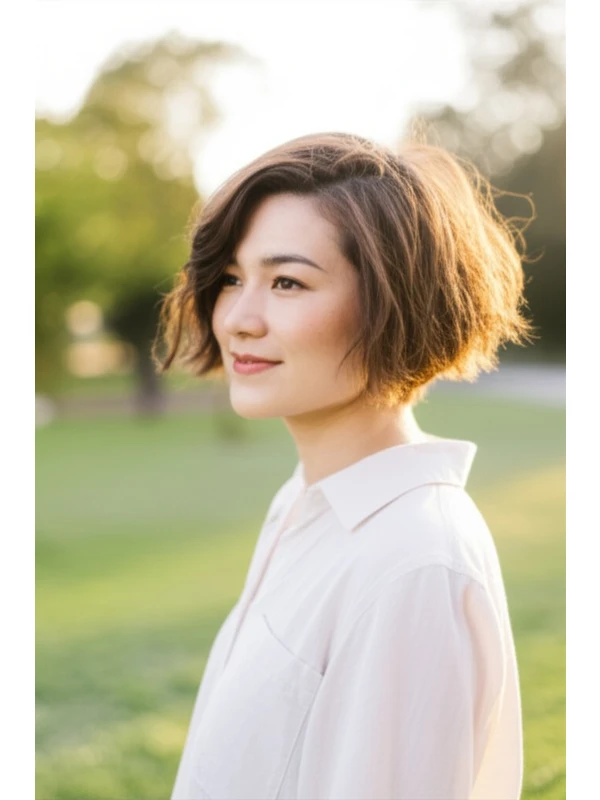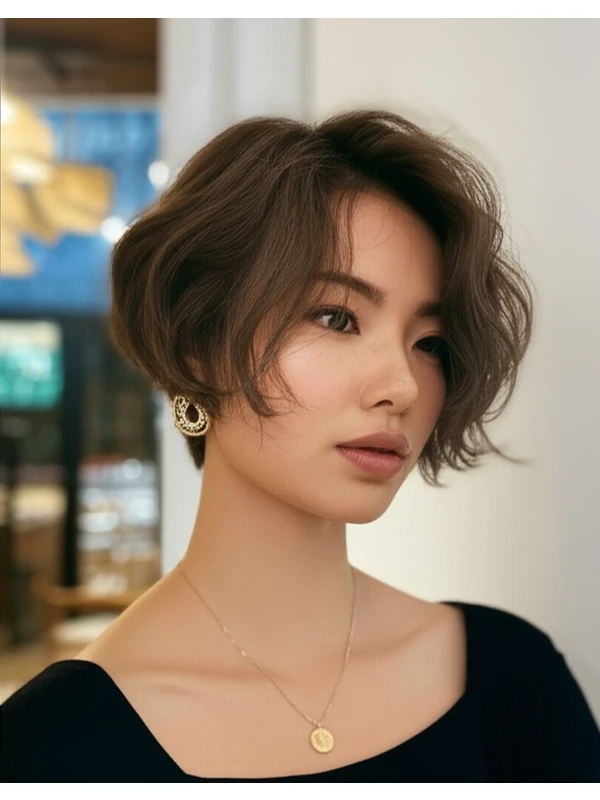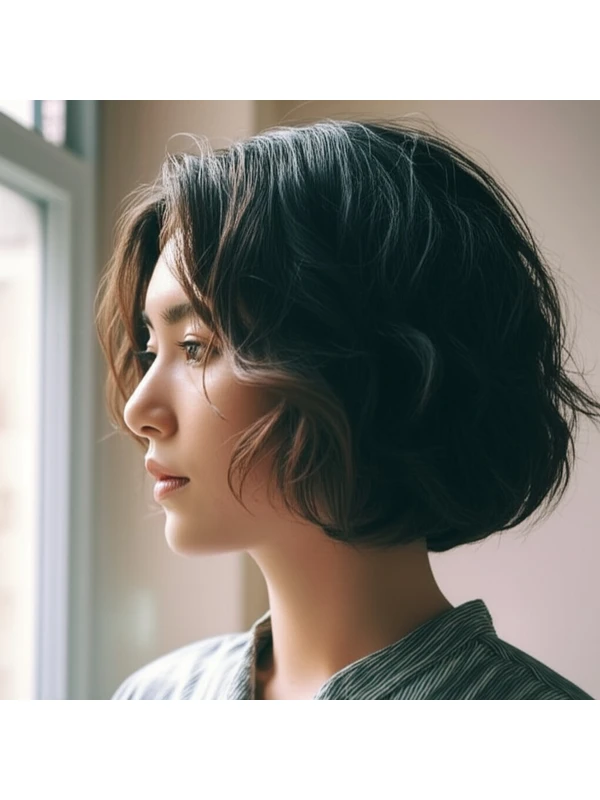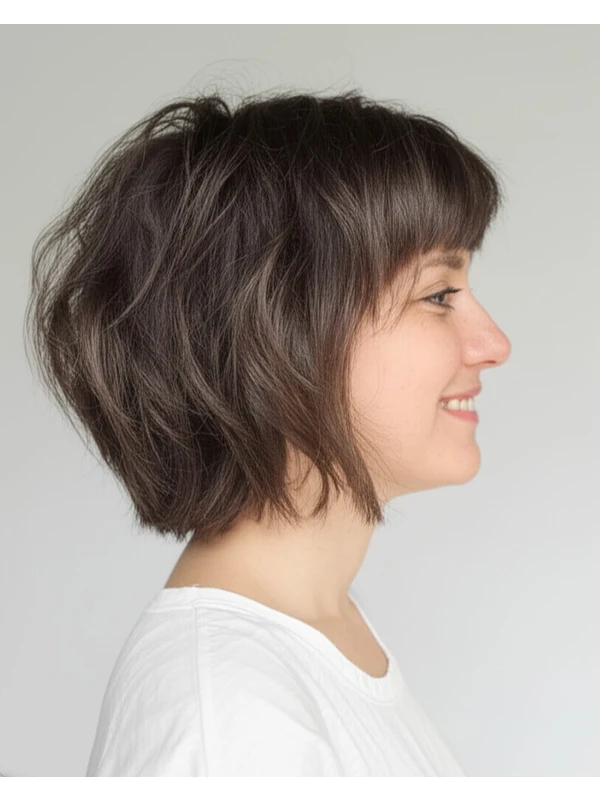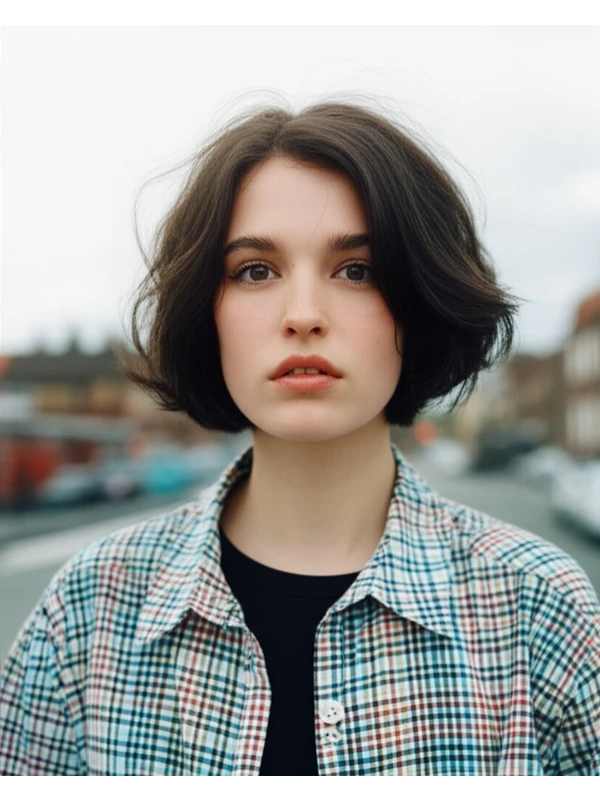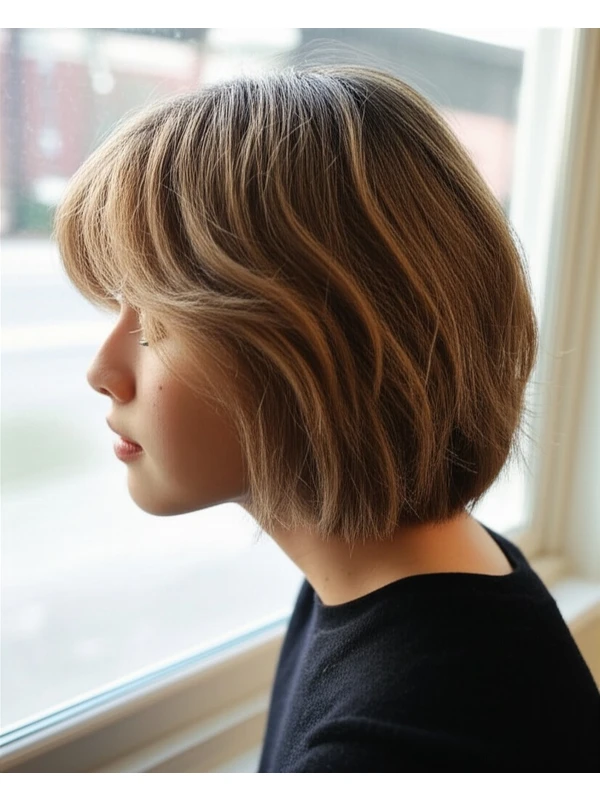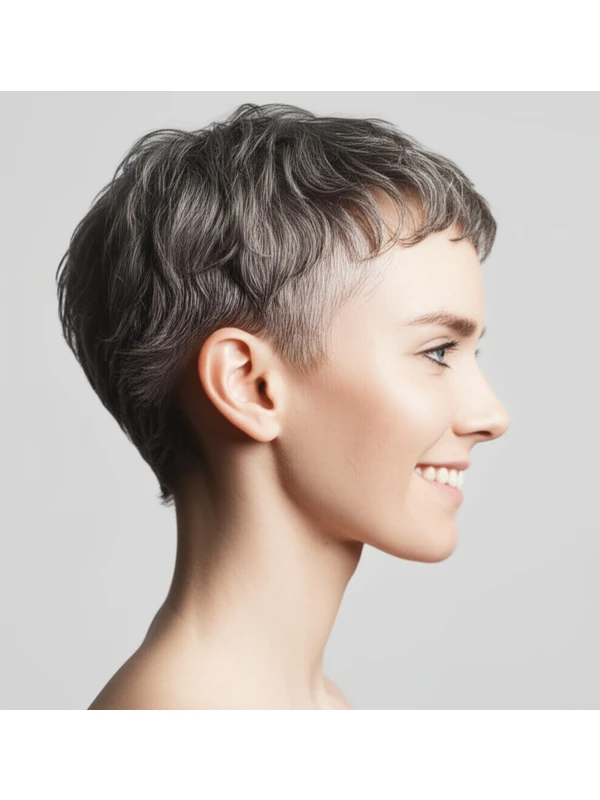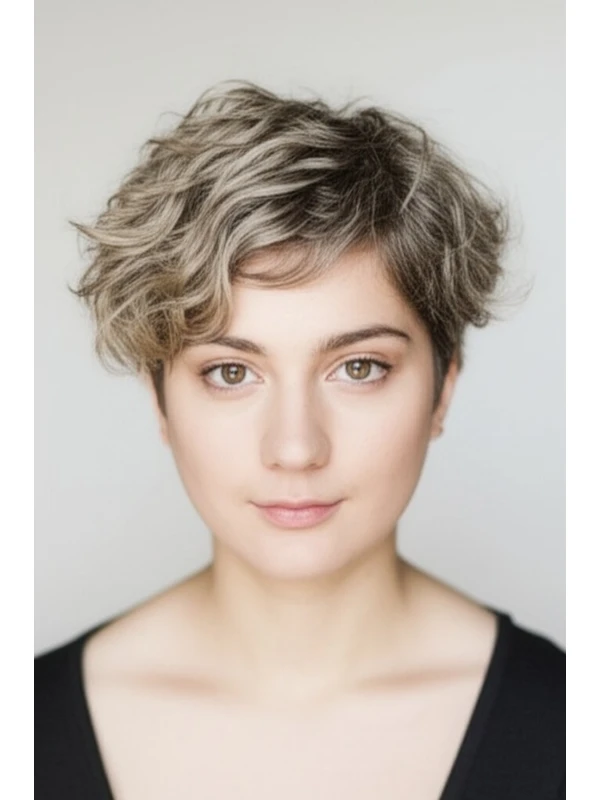#The Octopus Cut: A Modern Layered Style Guide
The octopus cut is having a moment! It’s a playful, modern style that offers lots of versatility. But what is it? This guide breaks down everything you need to know – from its origins and who it suits best, to how to style and maintain this unique look.
#1) Background & Definition: What is the Octopus Cut?
The octopus cut gets its name from the way the layers cascade around the face – like tentacles! It’s a heavily layered haircut characterized by short, disconnected pieces at the crown that gradually lengthen towards the ends. Think of it as a modern shag meets a textured bob.
Key Features:
- Disconnected Layers: This is the defining characteristic. The layers don't blend seamlessly; they stand out individually.
- Volume at the Crown: The shorter pieces create lift and volume at the top of the head, often softening features.
- Longer Lengths: While it can be short, the octopus cut typically falls between chin-length to shoulder-length (or even slightly longer).
- Textured Ends: The ends are intentionally choppy and textured for a less polished feel.
Typical Length Ranges: Chin length - Shoulder length (+/- 2 inches)
Alternative Names: Textured layered bob, disconnected shag, modern octopus cut.
#2) Face Shape Fit: Finding Your Best Octopus Angle
The beauty of the octopus cut is its adaptability, but some face shapes benefit more than others. Here's a breakdown:
- Oval Faces: This shape can pull off any length and variation of the octopus cut. The layers add dimension without disrupting balance. A longer fringe (curtain bangs) or wispy side-swept bangs work beautifully.
- Round Faces: Longer lengths are key! Avoid chin-length cuts as they can emphasize roundness. Layers around the cheekbones help to slim and elongate. A slightly angled, off-center part is also flattering. Avoid blunt, heavy fringes.
- Square Faces: Soften those angles with face-framing layers that start below the jawline. Avoid overly sharp or geometric cuts. Curtain bangs are a great choice for softening the forehead.
- Heart Faces: The volume at the crown of an octopus cut helps balance a wider forehead and narrower chin. Chin-length to collarbone length is ideal. Side-swept bangs or soft, wispy fringes work well.
- Diamond Faces: Similar to heart faces, the layers add softness and roundness. A fringe can help soften a strong brow line – consider a blended, textured option rather than blunt bangs.
- Oblong (Long) Faces: Shorter lengths with more volume at the sides will make your face appear wider and shorter. Avoid styles that are too long or sleek as they’ll elongate your face further. A fringe can help break up length.
#3) Body Proportions & Height Guidance: Tailoring the Cut to You
The octopus cut isn't just about your face shape; it also needs to complement your overall proportions.
- Petite (Under 5’4”): Shorter lengths (chin-length to mid-neck) prevent you from being overwhelmed by too much hair. Keep the volume at the crown moderate – too much can make you look shorter.
- Average Height (5’4”-5’9”): You have more flexibility! Experiment with different lengths and volumes.
- Tall (Over 5'9"): Longer lengths (shoulder-length or longer) work well to balance your height. You can handle a good amount of volume at the crown.
- Narrow Shoulders: Layers that add width around the shoulders create a more balanced silhouette.
- Broad Shoulders: Avoid excessive volume at the shoulder line, as it can exaggerate their width. Focus on lifting volume higher up.
- Short Neck: Medium to longer lengths are generally more flattering than very short styles that might accentuate a shorter neck. A side part helps create asymmetry and visual length.
- Long Neck: Shorter cuts with layers around the face can help minimize the appearance of a long neck.
#4) Works Best With Hair Types & Densities: Understanding Your Texture
The octopus cut thrives on texture, but different hair types require adjustments.
- Straight Hair: The disconnected layers will really pop and create lots of movement. Fine straight hair might need styling products to add volume and hold the shape.
- Wavy Hair: This is a fantastic match! The layers enhance natural waves and curls. Be mindful of frizz – a smoothing serum can help.
- Curly/Coily Hair: The octopus cut can work beautifully, but communication with your stylist is key to account for shrinkage. Shorter pieces near the crown will shrink significantly. Consider leaving more length at the ends to avoid excessive layering and maintain definition.
- Shrinkage Factor: Coils can shrink up to 75% or more! Account for this when determining length.
- Fine Hair: Layers add volume, but too many short layers can make hair look thin. Focus on strategic face-framing layers.
- Medium Density: This is a very versatile density that will generally work well with the cut.
- Thick Hair: Layers are essential to remove weight and create movement. A more dramatic, disconnected layering pattern works best.
#5) Styling Variations: From Casual Cool to Evening Elegance
The octopus cut's versatility shines in its styling options!
- Sleek vs. Textured: Sleek styles use smoothing products for a polished look; textured styles embrace the natural texture with sea salt sprays or texturizing creams.
- Middle vs. Side Part: A middle part creates symmetry, while a side part adds softness and asymmetry.
- Fringe Variations: Curtain bangs are universally flattering. Wispy bangs soften features. Blunt fringes can be edgy but require more styling effort.
- Occasion Styling:
- Casual: Air-dried with sea salt spray for effortless texture.
- Office: Blow dried smooth with a round brush to create volume at the crown and sleekness through the lengths.
- Evening: Use a flat iron or curling wand to enhance layers, add shine, and create more defined shape.
#6) Maintenance: Keeping Your Octopus Looking its Best
- Trim Cadence: Every 6-8 weeks is typical to maintain the shape and prevent it from looking too overgrown.
- At-Home Routine: Regular deep conditioning treatments are important, especially for dry or curly hair.
- Heat vs. Air-Dry: While air drying works well for a natural look, heat styling can help define layers and create more volume. Use heat protectant!
- Product Checklist:
- Shampoo & Conditioner (suited to your hair type)
- Leave-in Conditioner (especially important for dry or curly hair)
- Volumizing Mousse (for fine hair)
- Texturizing Spray/Cream (for added texture and definition)
- Serum/Oil (to tame frizz and add shine)
- Estimated Daily Styling Time: 15-45 minutes, depending on desired style.
#7) Grow-Out Roadmap: Evolving Your Look
- Months 1-3: The disconnected layers are most noticeable. Regular trims maintain the shape.
- Months 3-6: The shorter pieces start to blend slightly as they grow out, creating a softer look. You might need to adjust your styling routine to prevent it from looking too flat.
- Maintaining Shape: Ask your stylist for "dusting" trims – just snipping off the ends to maintain length and shape without changing the overall structure of the cut.
#8) Color Pairings: Enhancing Your Octopus Cut
- Cool Undertones (ash blonde, cool brown): These shades create a modern, edgy vibe.
- Warm Undertones (golden blonde, caramel brown): These add warmth and dimension.
- Low-Commitment Options: Balayage or highlights can brighten the layers without a full color change. Root smudging softens harsh lines.
#9) Season & Occasion Guide: Styling for Every Event
- Spring/Summer: Embrace air-dried texture with lightweight products and beachy waves.
- Fall/Winter: Add warmth with richer tones and use styling products to create definition and hold against the elements.
- Work: Sleek, polished styles with controlled volume.
- Weddings: Romantic, soft waves or a more structured updo that showcases the layers.
- Parties: Experiment with bolder colors or playful accessories.
#10) Cost & Time: What to Expect at the Salon
- Salon Time: Typically 1.5 - 2.5 hours, depending on hair length and complexity of layering.
- Estimated Price Range: Moderately priced – expect a slightly higher cost than a simple trim due to the intricate cutting involved.
#11) Pros & Cons: Weighing Your Options
Pros:
- Versatile styling options
- Adds volume and dimension
- Modern, on-trend look
- Flattering for many face shapes
Cons:
- Requires regular trims to maintain shape
- Can be time-consuming to style (depending on desired look)
- May not suit all hair types/densities without adjustments
#12) Salon Consultation Script: Questions to Ask Your Stylist
Here are some prompts for your consultation:
- “I’m interested in the octopus cut. Can you show me examples of different lengths and layering patterns?”
- "Based on my face shape [describe it], what length and fringe would be most flattering?"
- “My hair is [hair type & density]. What adjustments do we need to make for my texture?”
- "How can I style this cut at home with minimal effort?"
- "What products do you recommend for maintaining the shape and health of my hair?"
FAQs:
- Is the octopus cut hard to style? It depends! With practice, it's manageable. Some variations are easier than others.
- Can I get an octopus cut with very short hair? Yes, but shorter lengths require more frequent trims.
- Will this look good on thin hair? Absolutely, but strategic layering is key to avoid a sparse appearance.
- How do I prevent frizz with the octopus cut? Use smoothing products and consider a keratin treatment (consult with your stylist).
- Can I wear my hair up with an octopus cut? Yes! The layers create volume even in updos.
- Is this style suitable for older women? Absolutely! It can soften features, add lift, and look very chic at any age. Adjust the length and layering to suit your personal style.
